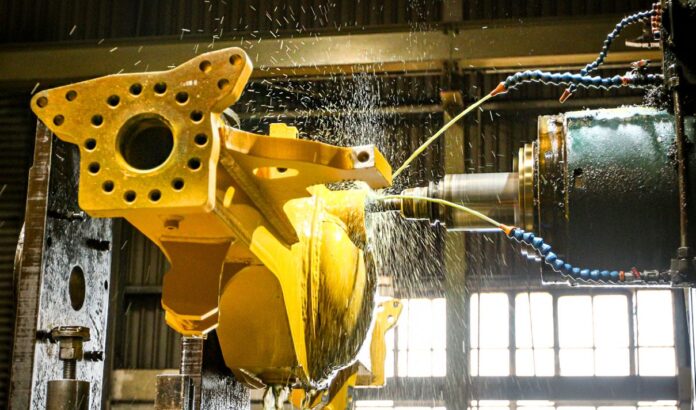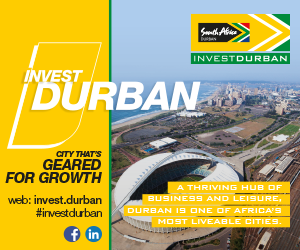Bell Heavy Industries has been launched. In 2023, Bell Equipment, the manufacturer of well-known yellow Articulated Dump Trucks (ADTs), announced that it would be offering services such as complex engineering, heavy fabrication and machining to other companies. In making the point that the company’s staff is well-equipped to offer these sophisticated services, Bell Equipment’s Group Business Development Director, Stephen Jones, noted, “South Africa has seen a huge reduction in engineering companies and in response, we have strategically positioned our South African manufacturing facility to fill this void by providing project engineering and contract manufacturing through BHI.”
Bell’s range of equipment includes Excavators, Backhoe Loaders, Wheeled Loaders, Telescopic Handlers, Skid Steer Loaders and Graders that are used in the mining, earthmoving and agriculture sectors. The company is a notable exporter and was named the overall winner at the 2023 South African Capital Equipment Export Council (SACEEC) Exporter of the Year Awards.
Engineering in South Africa
There is more economic activity in the Northern Cape than many South Africans know about. The towns of Kuruman and Pofadder have no fewer than three Country Hotels properties – each. Many of the professionals staying in these hotels, lodges and inns are engineers, working on an ever-increasing number of mining expansions or solar or wind renewable energy projects.
Another town that might not be a little town for much longer is Kathu. Ensor was contracted by the Provincial Government of the Northern Cape to develop and extend Kathu West with approximately 5 700 stands some years ago. More recently GAP Infrastructure Corporation (GIC) has been doing township developments and road, water network and stormwater projects across the province. The water network project entails installing an internal water-reticulation system that will include reliable house connections, water meters, fire hydrants and isolation valves, providing the community with a stable and secure water supply. The sewer network project aims to install robust uPVC sewer pipes and concrete manholes with heavy-duty covers.
Many South African engineering concerns are filling their order books with renewable energy infrastructure orders, and its not just in the Northern Cape. The Eastern Cape is rapidly becoming known as the “Wind Province” while Mpumalanga is attracting a lot of attention because of the existence of significant grid infrastructure supporting power plants, many of which are due to be decommissioned soon. Solar and wind projects could then get access to the grid cheaply.
The country has ambitious plans to generate more power from solar, hydro-electric and wind plants and fit more rooftop solar panels to houses and businesses. One such project in the Northern Cape, the Redstone Concentrated Solar Thermal (CSP) power plant, represented a substantial foray for Grinaker-LTA’s engineering division into the renewable energy field.
Some of the key aspects which Grinaker-LTA was responsible for included hot and cold storage tank bases, civil works, the steam generation structure and the molten salt pump towers. The 100MW plant is the first project-financed CSP with molten-salt-central receiver in the world. ACWA Power, a Saudi developer, investor and operator of power generation plants, and Chinese engineering company SEPCOIII Electric Power Construction Limited, managed the project and they jointly appointed Grinkaker-LTA as the contractor to execute the construction of the project’s critical structures.
Also in the Northern Cape, engineering skills are being expanded by new work associated with radio astronomy. Local artisans from the town of Carnarvon have built telescopes for a radio telescope array project, the 350-dish HERA project, which is led by the US National Science Foundation with the South African Radio Astronomy Observatory (SARAO) acting as the local partner, responsible for systems engineering and construction, among other duties. At one point, the construction team grew to 20 and many news skills were learnt.
When dairy company Clover decided to consolidate its national operations into just four plants, technological expertise was needed to make sure those factories were able to cope with greater demand. One such company was Energy Partners Refrigeration (EPR) who were contracted to tackle a number of issues, including increased power requirements to higher refrigeration load as well as increased steam demand and pressure requirements. The upgrade of the cooling structure featured the installation of a new 10MW ammonia system and 16% of all the electricity used by the new system is generated by solar PV. An innovative aspect of the project is that Clover has a Cooling-as-a-Service (CaaS) contract, a pay-per-use model that removes the large upfront investment cost as a barrier to improved efficiencies and improved environmental performance.
Marine repair and engineering form a significant sector in the Western Cape and KwaZulu-Natal, with established companies such as EBH South Africa offering comprehensive services. Both KwaZulu-Natal ports are expanding and will continue to attract engineers.
The Engineering Council of South Africa has a programme where trainees can earn certificates in specific disciplines from a range of institutions. The qualifications are in line with the council’s Exit Level outcomes. Six of South Africa’s biggest construction companies have established a R1.25-billion skills fund.
Further online resources:
- Consulting Engineers South Africa: www.cesa.co.za
- Engineering Council of South Africa: www.ecsa.co.za
- South African Institute of Electrical Engineers: www.saiee.org.za









